
I’ve been waiting anxiously for snowy weather over here. This year’s winter in Kyoto, however, is mild and quite warm. There were only four snowy days, including the past weekend, this season. Downtown Kyoto was covered only with a thin, fragile layer of wet snow. But up in the North, there is a magical area called Kibune.
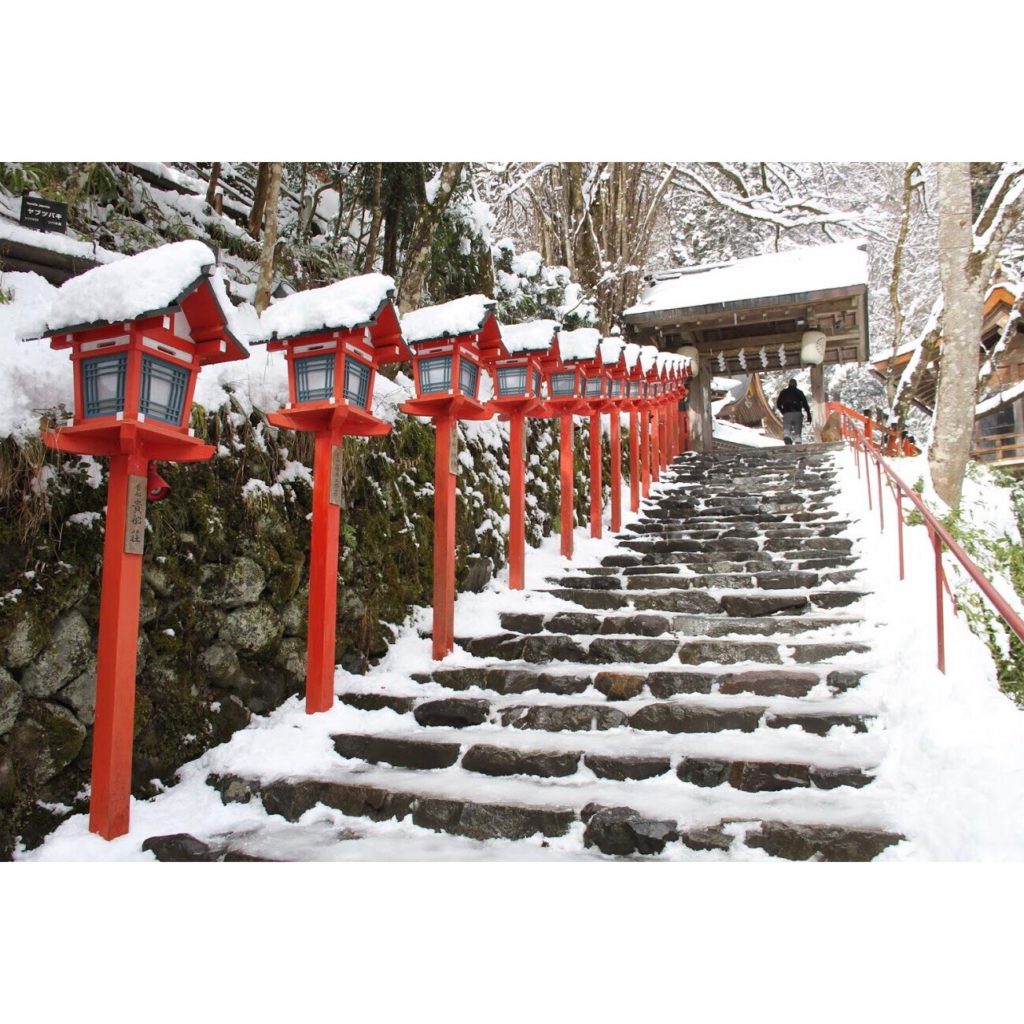
Kibune town is located in the mountains and shielded with evergreen plants and trees. It’s truly mystical and obscure. If you’re a fan of Hayao Miyazaki’s movies, you will probably start wondering which mysterious creatures are hidden within Kibune’s forests. But Kibune, and its famous Kifune Shrine, is mostly associated with demon (yokai 妖怪) stories and spirituality.
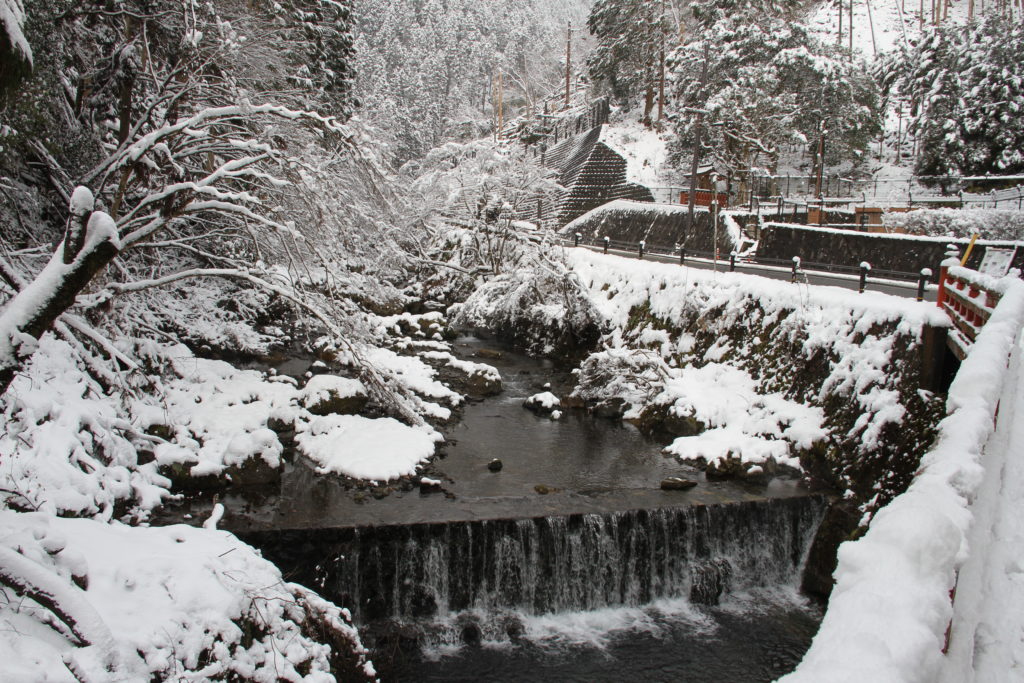
The small village and Shinto shrine were built over 1600 years ago high in the mountains to commemorate the deity of providing water. The legend says that princess Tamayori, who is considered to be the mother of Emperor Jimmu), traveled in a yellow boat to Kibune all the way from Osaka. She passed the Yodo and Kamo rivers and ended up at Kibune’s Okunomiya area. The local people built a wooden shrine at the place where the boat stopped. It’s said that the princess’ boat is buried under the shrine’s stone.

It’s always been a very important sacred place, as pure water is still one of the most needed resources. It’s also believed that the goddess of Kifune can manipulate the weather, so it’s been crucial to obtain her favour. For almost 70 years, Kifune Jinja was officially protected by the Japanese government. Nowadays, pilgrims come here to pray for good travel, road safety, efficient study, matchmaking, and general prosperity.
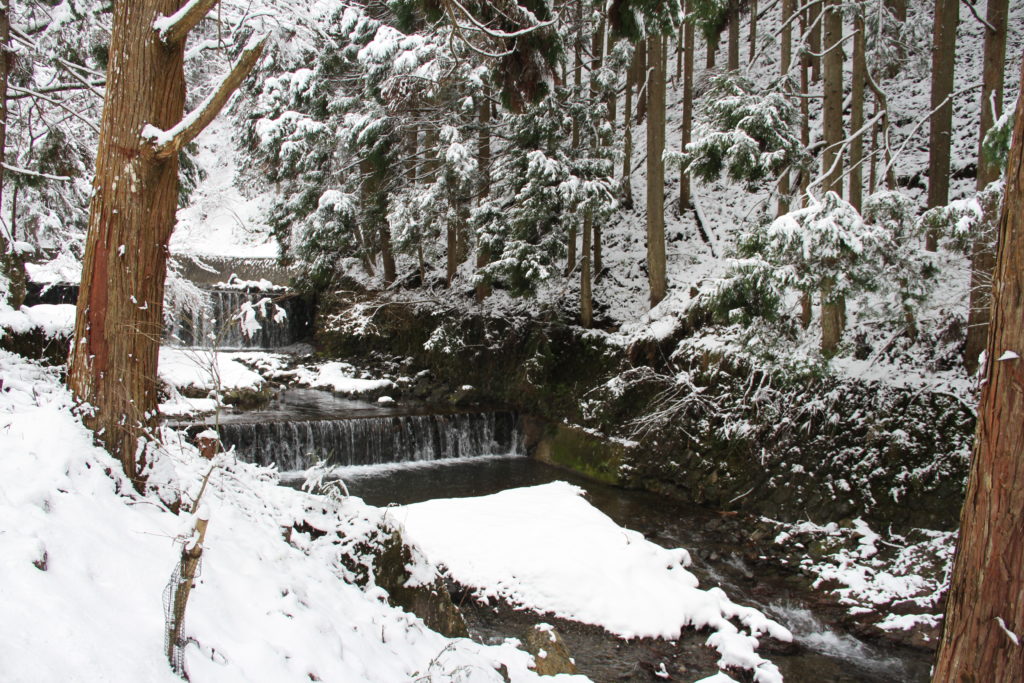
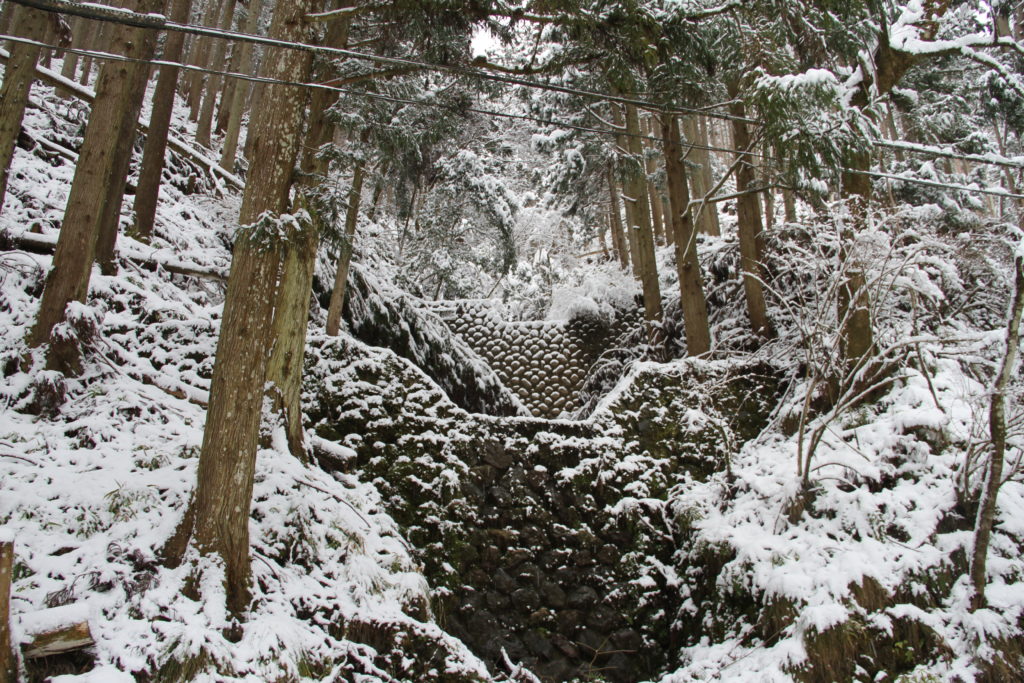
The best way to get to Kibune is to board the Eizan train. In Autumn, the train’s route is very scenic—it goes through a maple tunnel and travelers can take photos of the illuminated red leaves. Even the train itself is a special one, with extra large windows and glass ceiling.
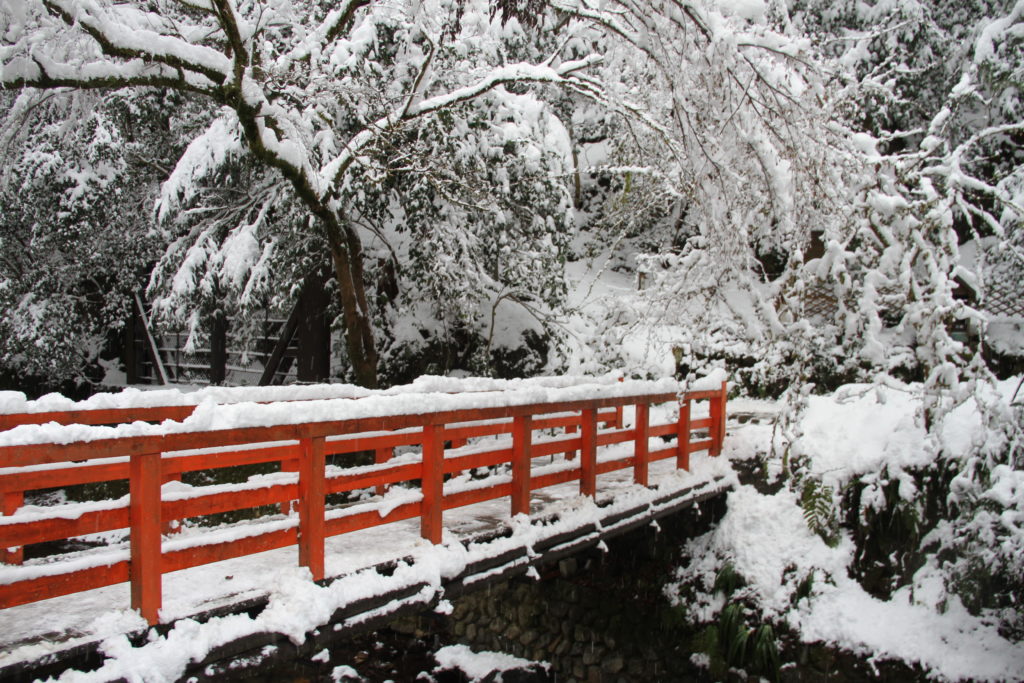
Upon the arrival, the pilgrims can choose either hiking up the hills or taking a bus. Journey by bus takes only about 10 minutes, but walking is worth the effort. The breathtaking road trail leads by the forest and water canal with small waterfalls every few meters.

After about 20-minute hike, the local restaurants (i.e. soba, tempura, tea, and ice-cream shops) start to show up. Most of them are closed in winter, but in the summertime, they set up wooden terraces at the water stream, so guests can feast almost directly at the waterfalls.
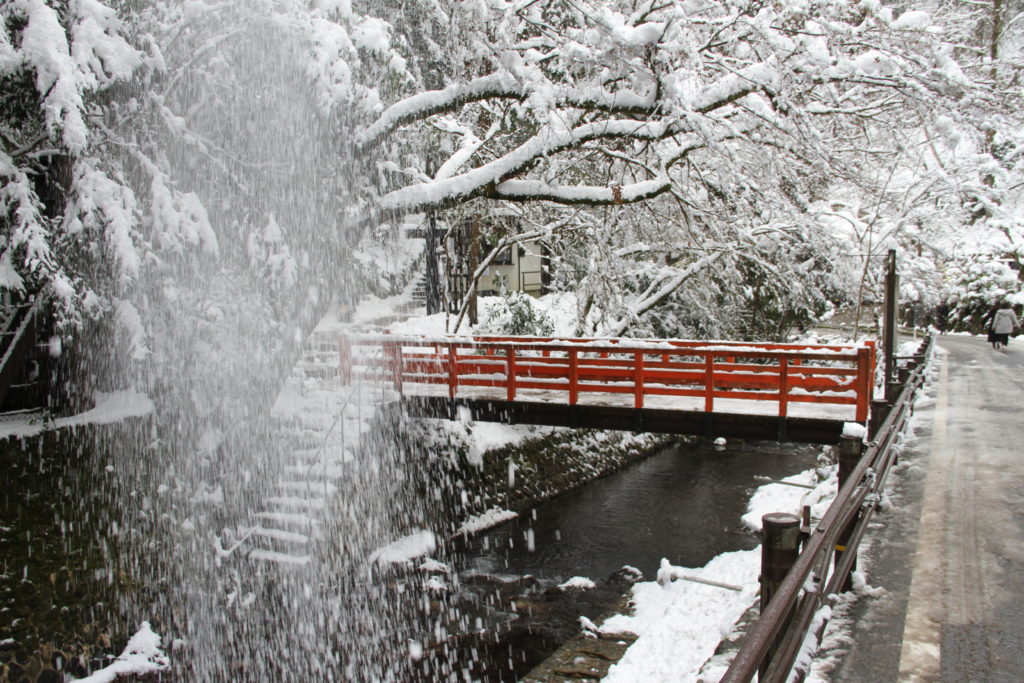
The entrance stairs to Kifune are embellished with an enormous torii gate and a chain of red lanterns, lit by night. It’s a very popular spot to photograph, so it’s better to visit the shrine as early as possible.
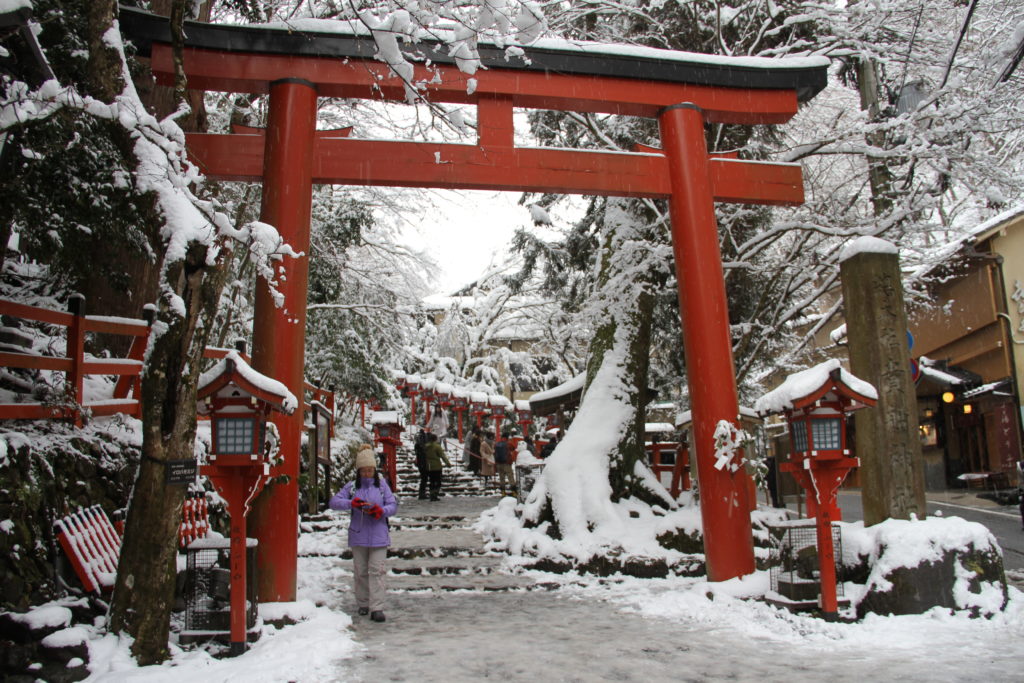
Inside the Kifune Shrine, at a tiny pond filled with sacred water, the visitors are able to discover their fortune written on paper omikuji. The fate is revealed only when the paper touches the water. It’s also recommended to drink from the stream! The powerful water deity will grant you lots of good luck then.
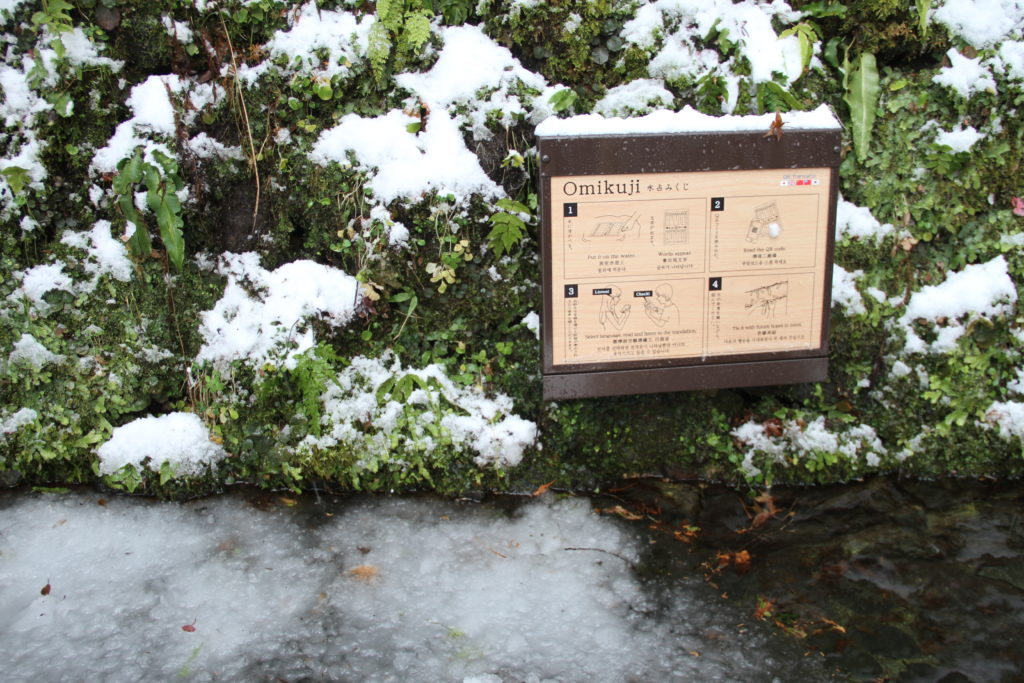
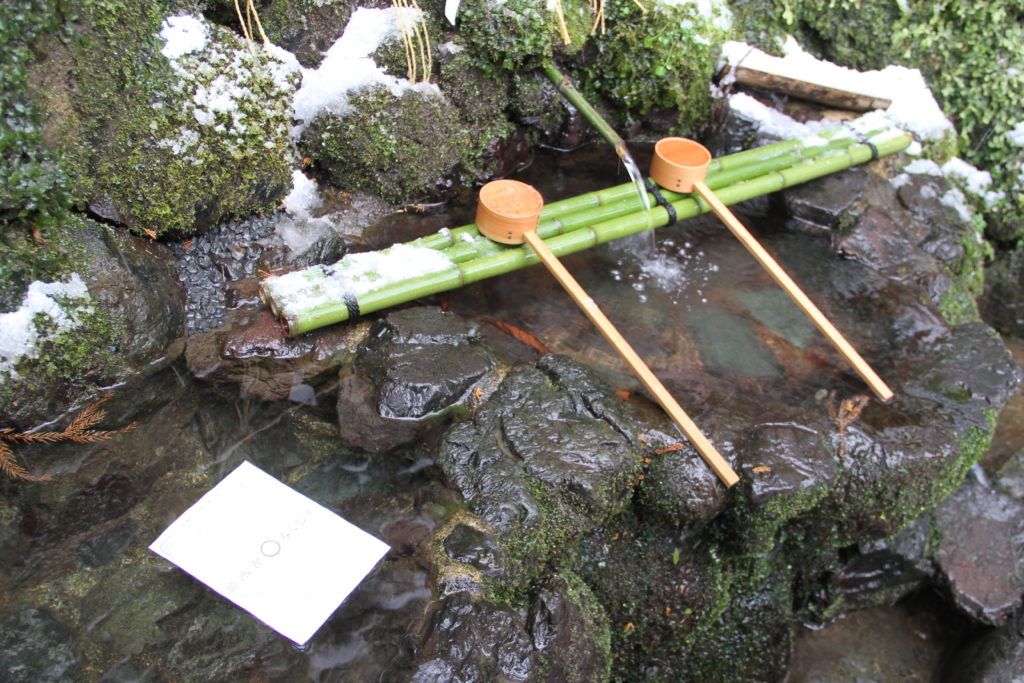

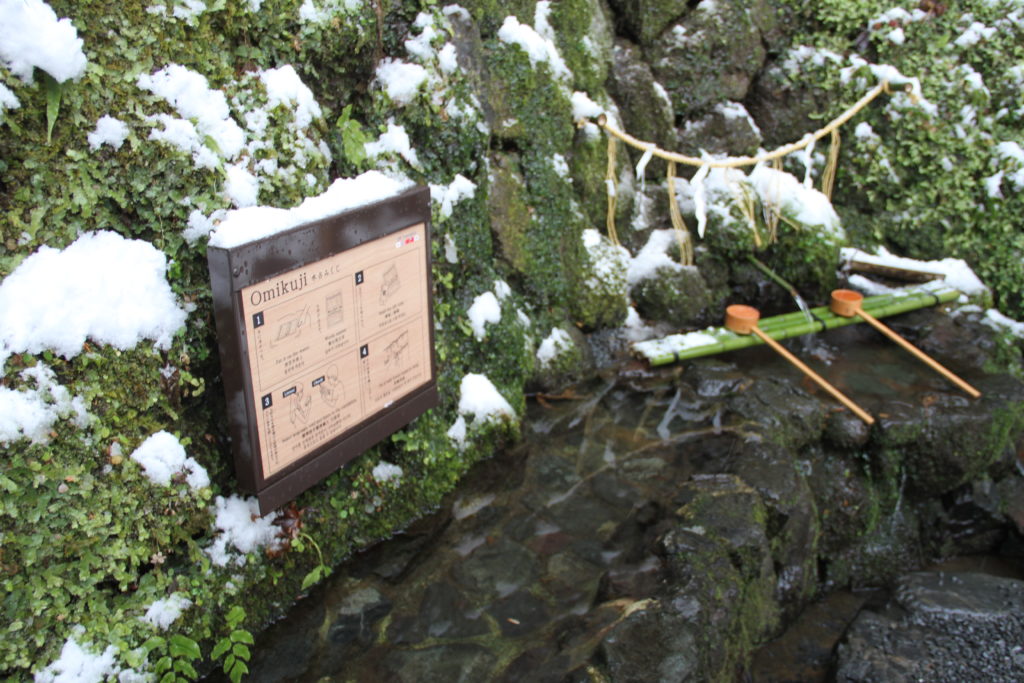
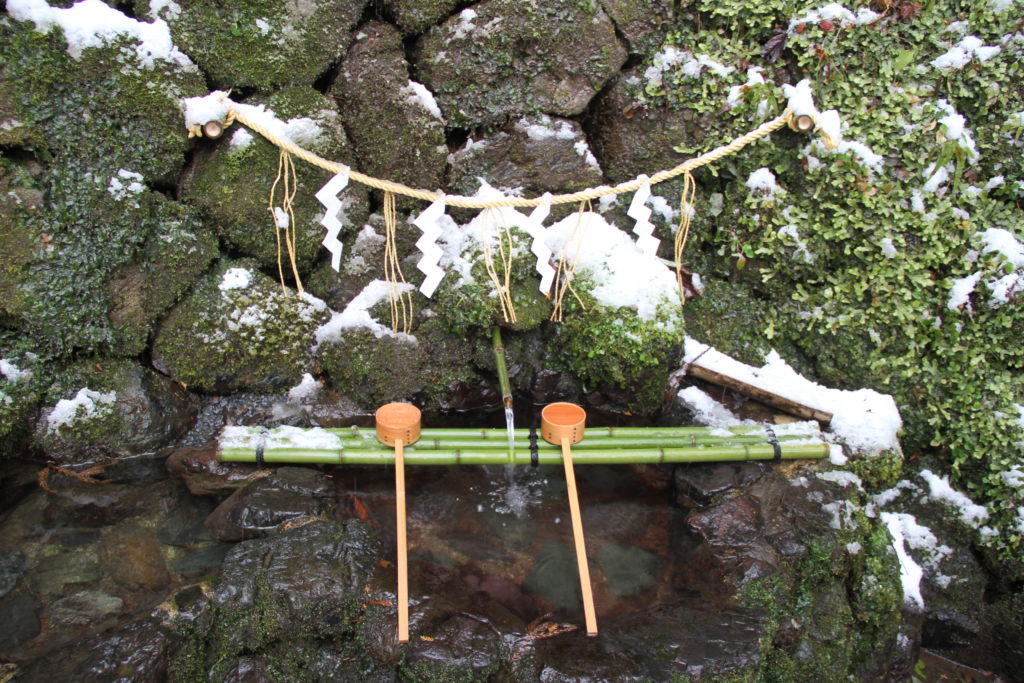
It’s also possible to purchase wooden boards (ema) and write your wishes on them. The Kifune’s ema have two beautiful design—a junihitoe lady and horses. There are two legends associated with these particular depictions.
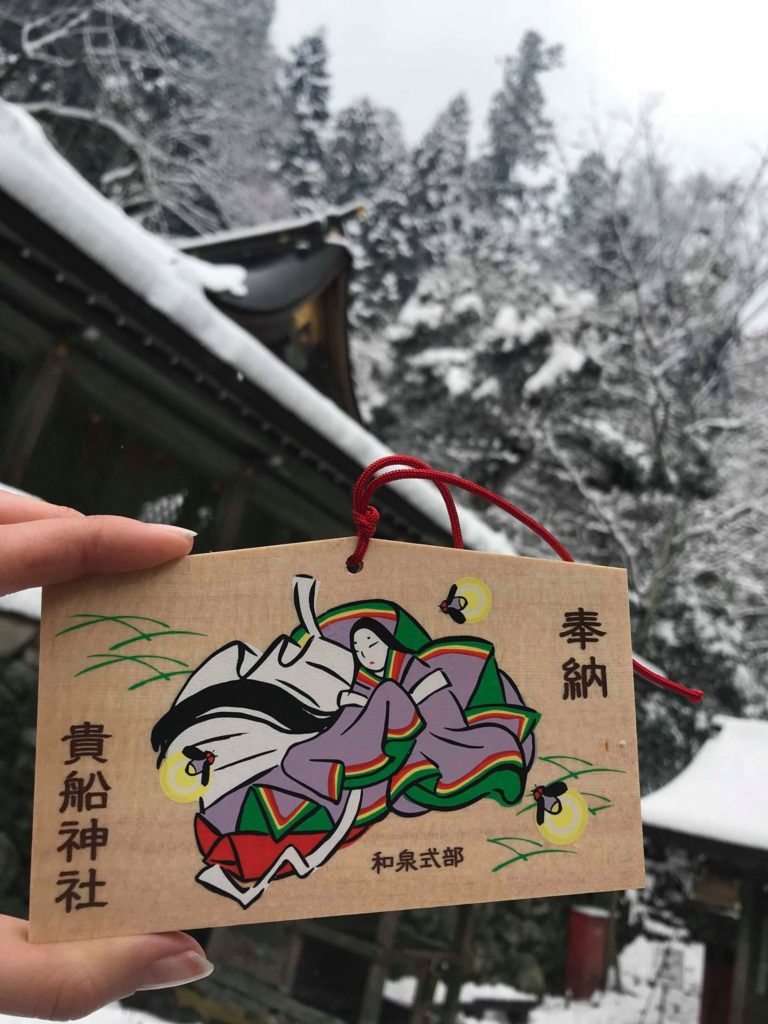
Horses were offered at the shrine by the emperors to manipulate weather. If they wished for rain, they would sacrifice a black horse. Praying for sunny weather would realize in offering a white horse.
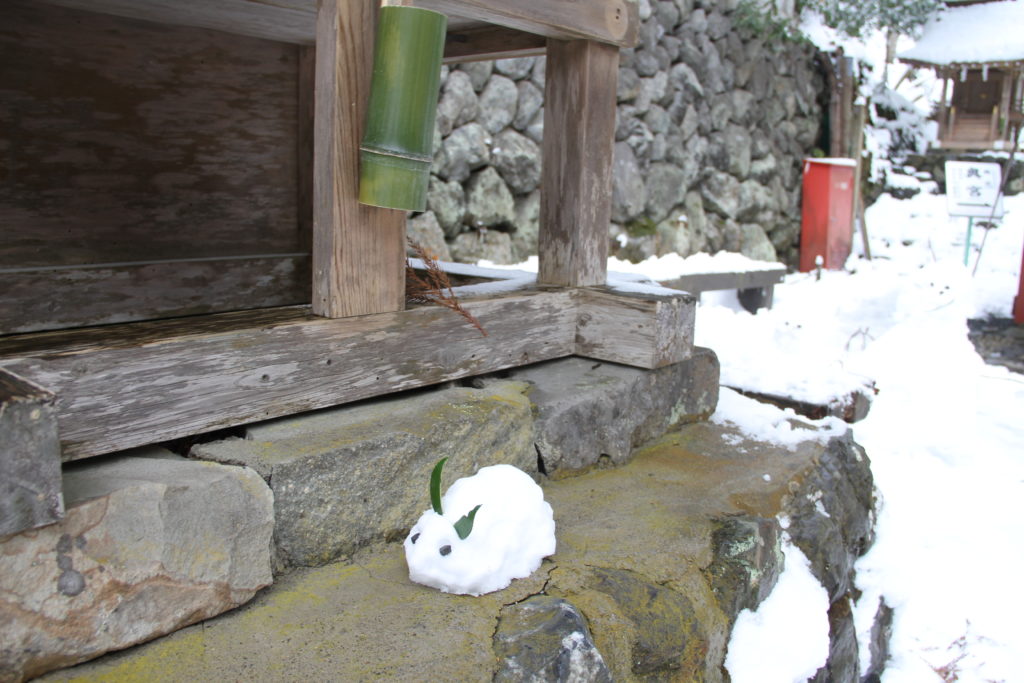
The junihitoe portrays Izumi Shikibu, a Heian poet who prayed at Kifune for fulfilling love. As her wish came true, she fell in love with the Kibune area as well and its water stream’s fireflies. Shikibu composed a poem about the Kifune Jinja:
To dwell upon such things,
The fireflies above the stream
Seem much like mine own soul,
Wandering free from my body.
But Kifune grants not only happy love. It’s also associated with the most powerful curse, achieved during a ritual called “the Ox Hour” (丑の刻参り). This act is performed to release a grudgeful demon seeking vengeance (oni 鬼), usually, on a former lover. It was widely popular among these women who were cheated, jealous, or suffering from unfulfilled love. Gained fame in the Edo period and nowadays still feared by many, to the point it might be legally charged as a hate speech and stalking crime.
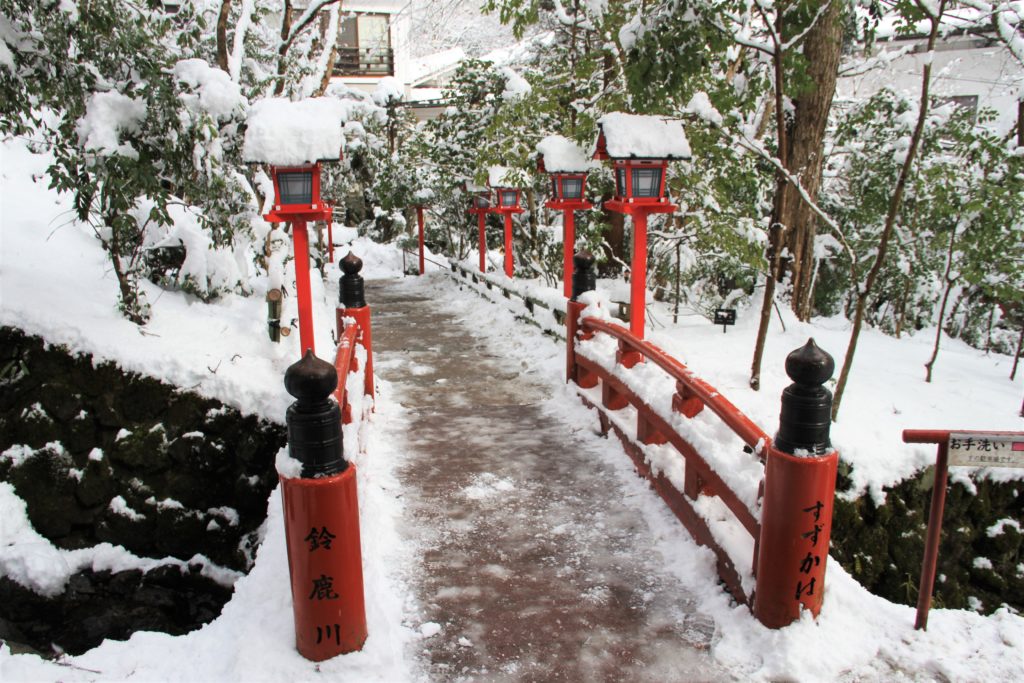
The ritual itself has to be well-prepared. Around 2 AM, the ox hour, when all of the evil spirits and ghosts creep out into the world of mortals, one needs to sneak into a Shinto shrine where powerful kami resides. The Kifune shrine is the most famous spot for this ritual, but evidence of the Ox Hour visits can be also found at other Kyoto shrines, such as Jishu Shrine in Kiyomizu complex, known as a mecca of gods of love and relationships.
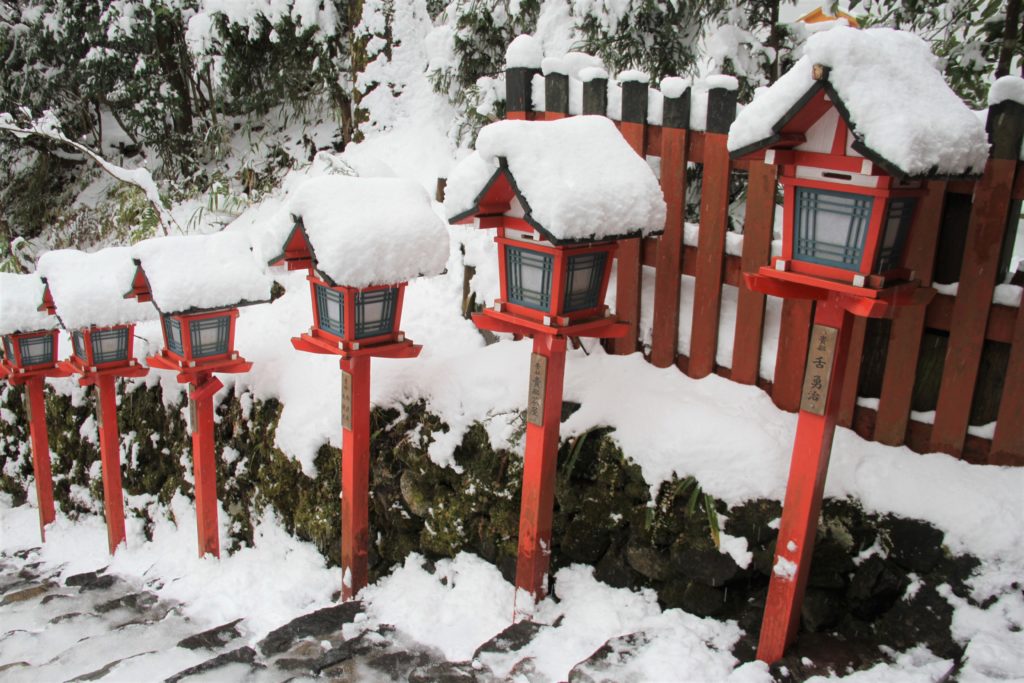
The practice requires a special costume. A white kimono sloppily tied in the front or back; loose hair; a face painted white or red; a mirror hanging from a neck over a chest; tall geta sandals; a knife or sword tucked into an obi; a comb, razor, or bundle of bamboo and pines in a mouth between the teeth; and, most notably, an inverted cooking trivet with three lit candles worn on the head. This particular outfit turns the occultist into a vengeance demon burning with hatred and desire.
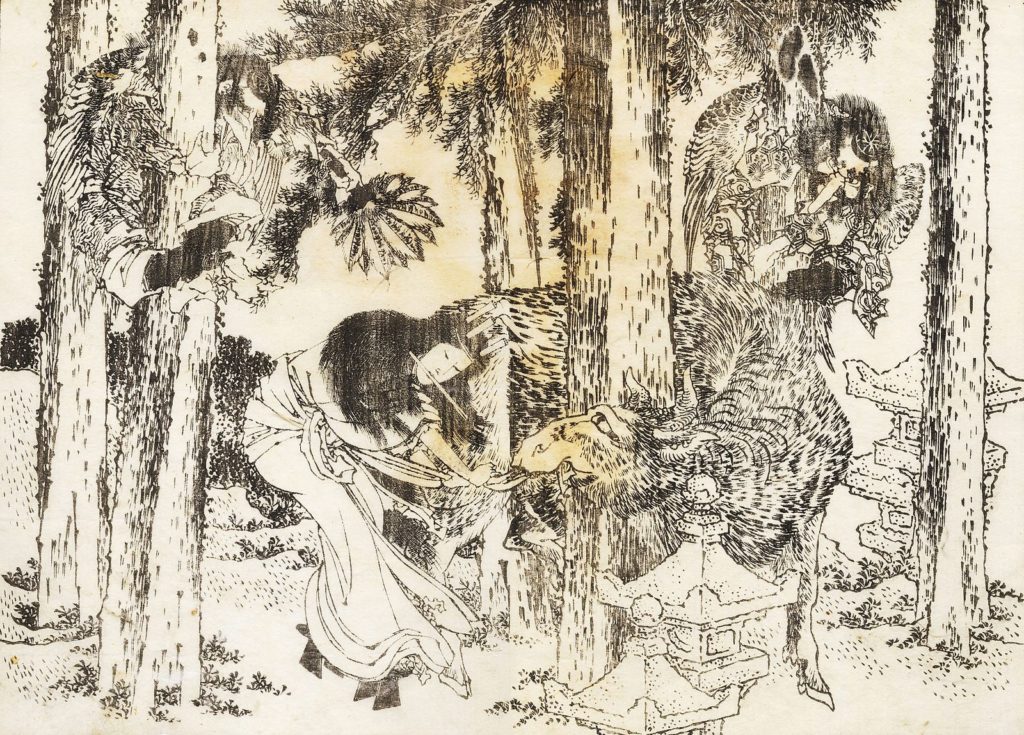
Despite the extravagant attire, the conjurer has to remain unnoticed. If anyone witnesses this act of sorcery, the spell won’t exactly work out – the black magic will affect the witching one. Moreover, it’s recommended to kill every gawker to prevent such situation, hence why the knife tucked into the obi. The comb between teeth secures the mouth from trembling and making noises. Being completely hushed is an important task of the whole process.

Finally, around 2 AM when the gate between two worlds (human and yurei) is open, it’s possible to summon the evil force. The caster, fully dressed in the outstanding demon outfit, has to find a sacred tree at a shrine of choice. Then, a straw doll (waraningyo 藁人形) is pinned onto the tree with a hammer and long nails. The waraningyo represents the target of everlasting torment and affliction and, similar to the voodoo magic, it may contain something related with the victim (i.e. a photo, hair, or other DNA). Even nowadays obsolete holes can be observed in the holy trees’ cortex, also at the Kifune Shrine. It’s an evidence of a previously released curse.

This demonic ritual was depicted by many famous artists, such as Katsushika Hokusai. Ushi no Koku Mairi appeared also in various theatre (noh and kabuki) plays, i.e. Kanawa (鉄輪), and legends (Hashihime 橋姫). Some of the artistic portrayals are based at the Kifune Shrine which is still a cradle of this infamous black magic curse.


Special thanks to Hyakumonogatari.com and yokai.com

the photos you display are very beautiful, you are very lucky to find a good picture to take. did you use the tour guide while there to show you these places right away?
Hey! Thank you for your kind comments. Actually, I’m a guide! I know a lot of hidden gems in Kyoto 🙂
Normalment mai m’ha agradat llegir articles als blocs
però per aquest bloc vull dir que aquest escrit realment em va obligar a provar-ho!
El teu gust per l’escriptura m’ha sorprès.
Gràcies, molt bon article.
Gràcies!
Hi, just wondering is it always snowing in Kibune during winter period (late Jan) even if there is no snow in Kyoto? Thank you! 🙂
Hi! Not always – the altitude is not so high, so it’s usually snowy when the temperature in Kyoto city drops as well